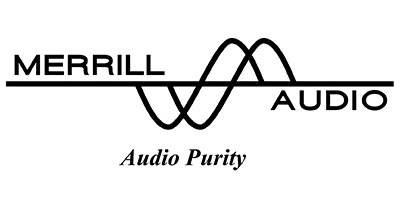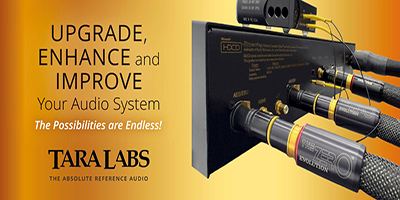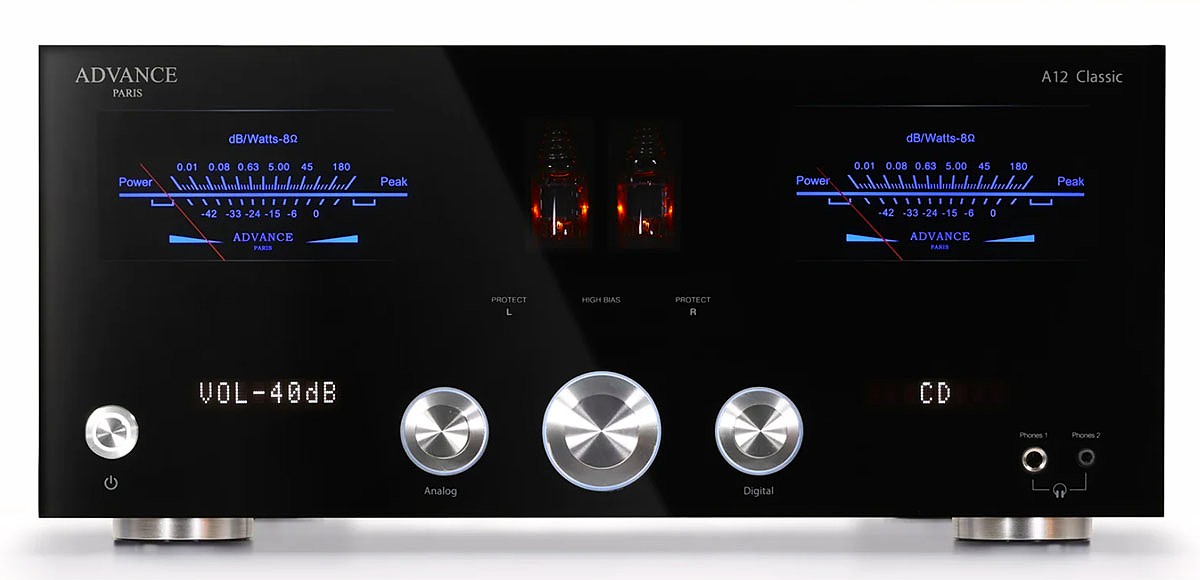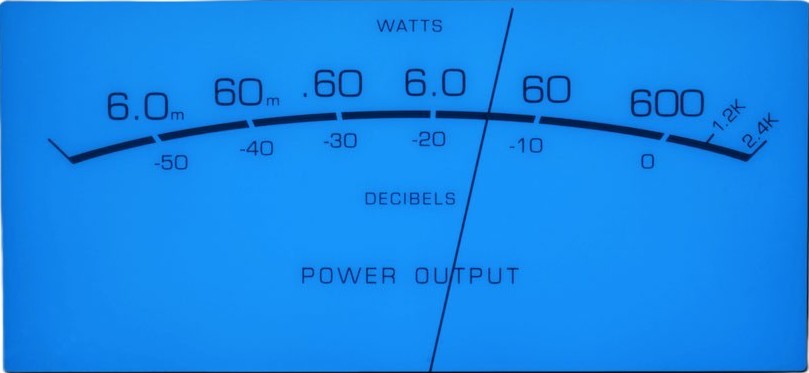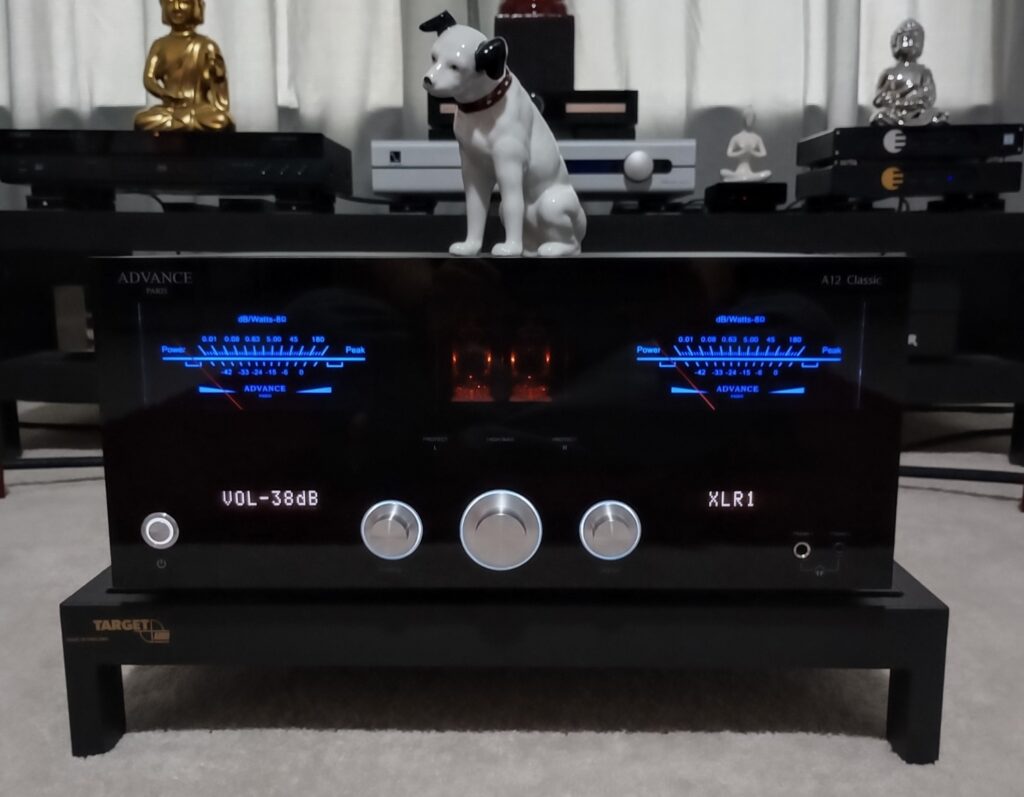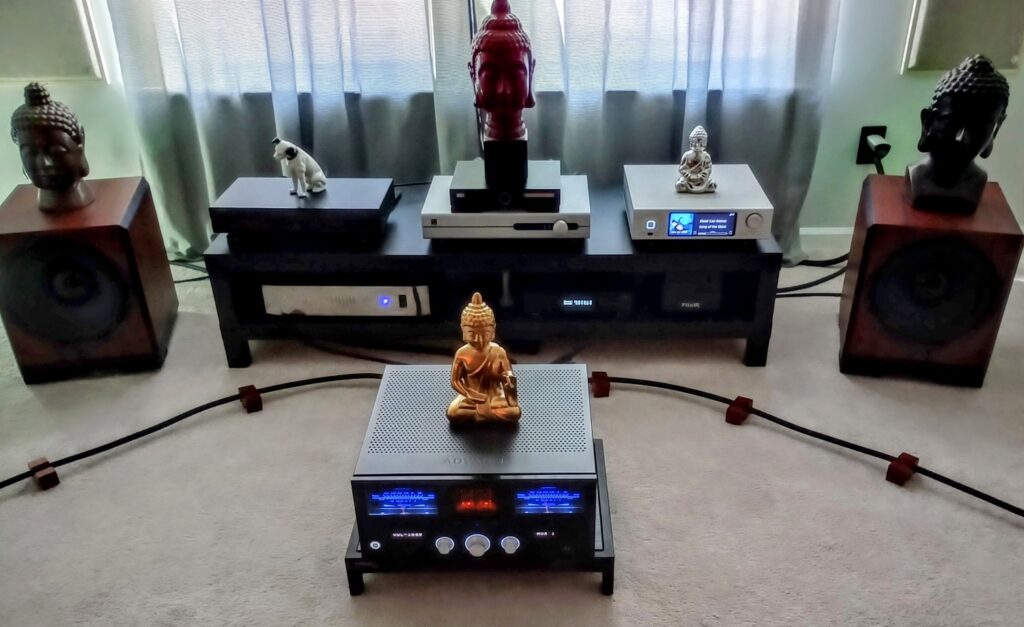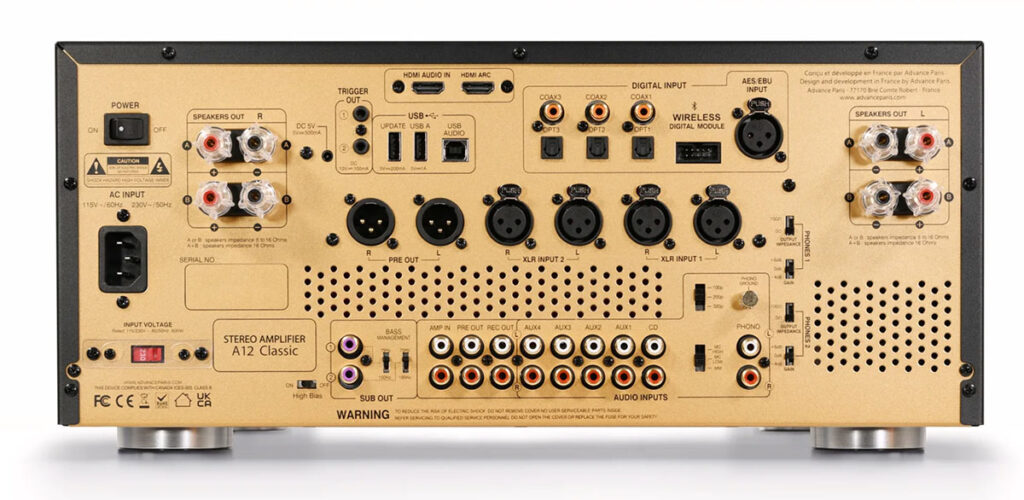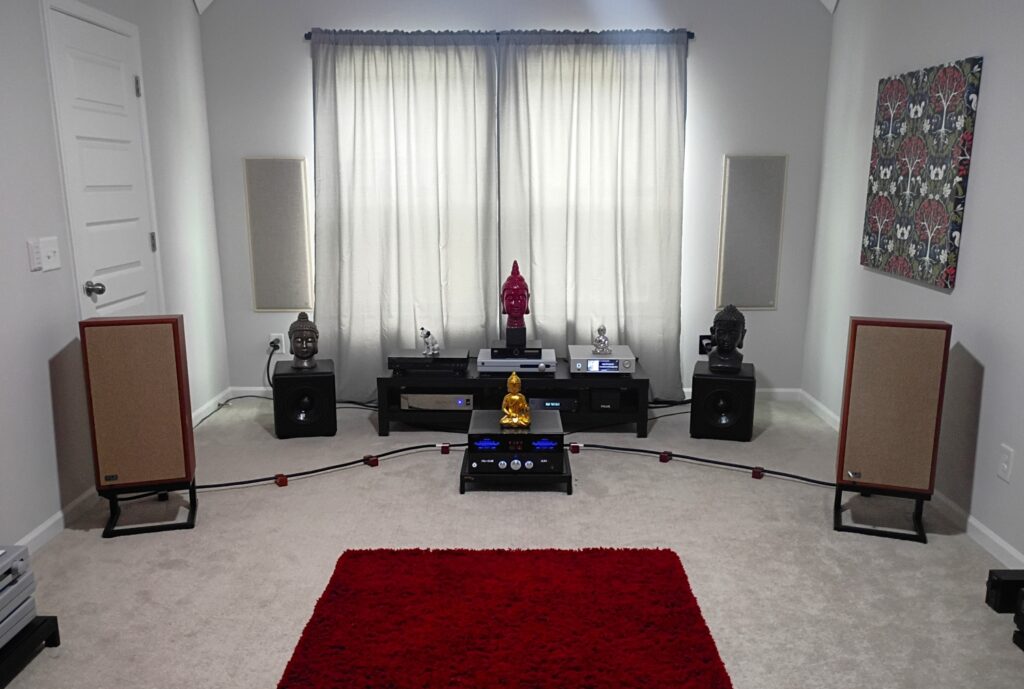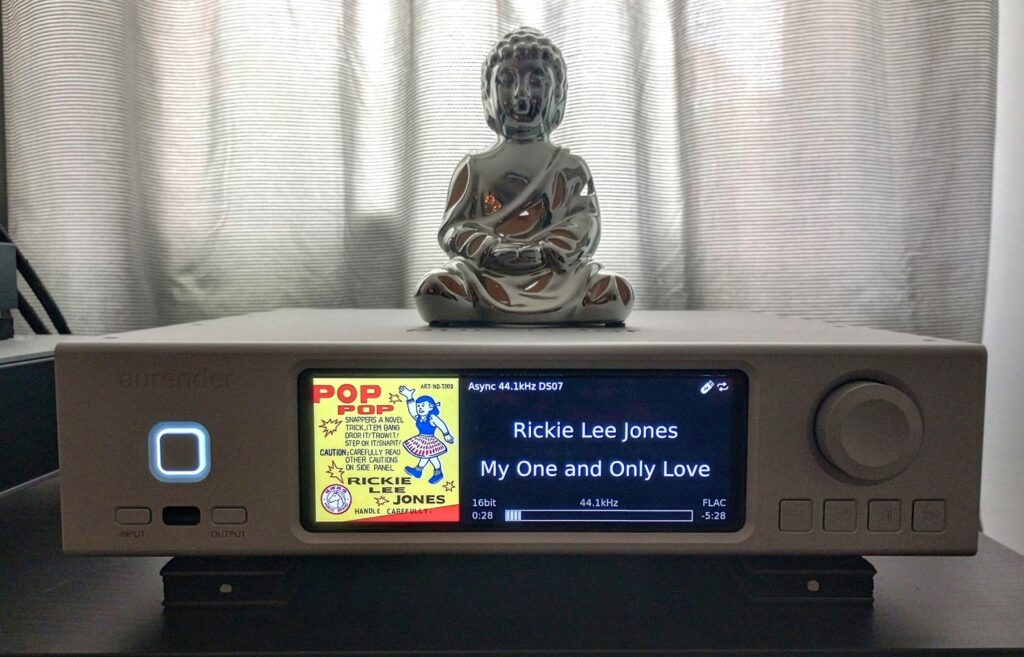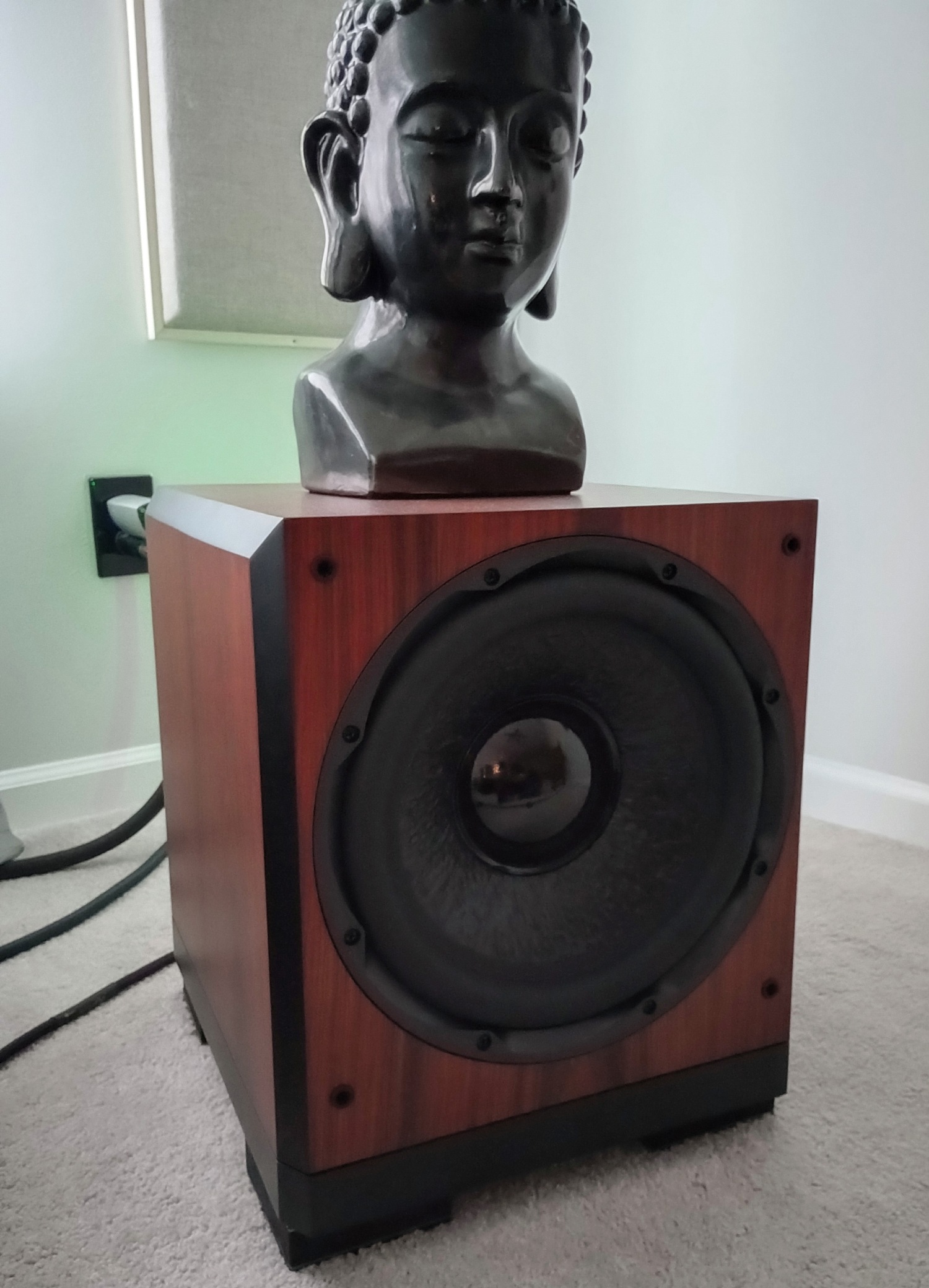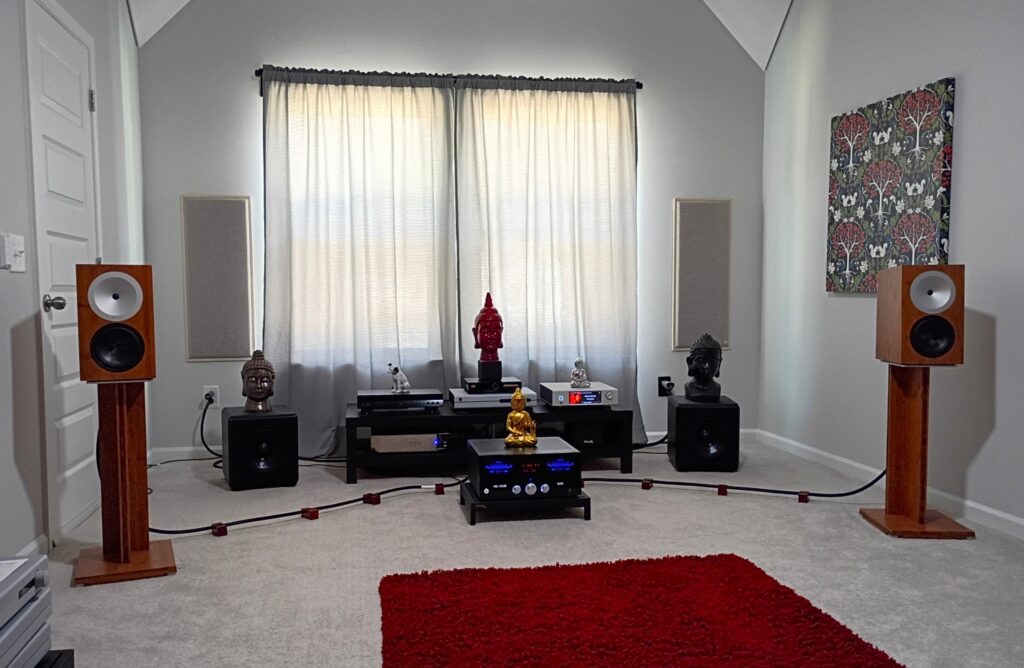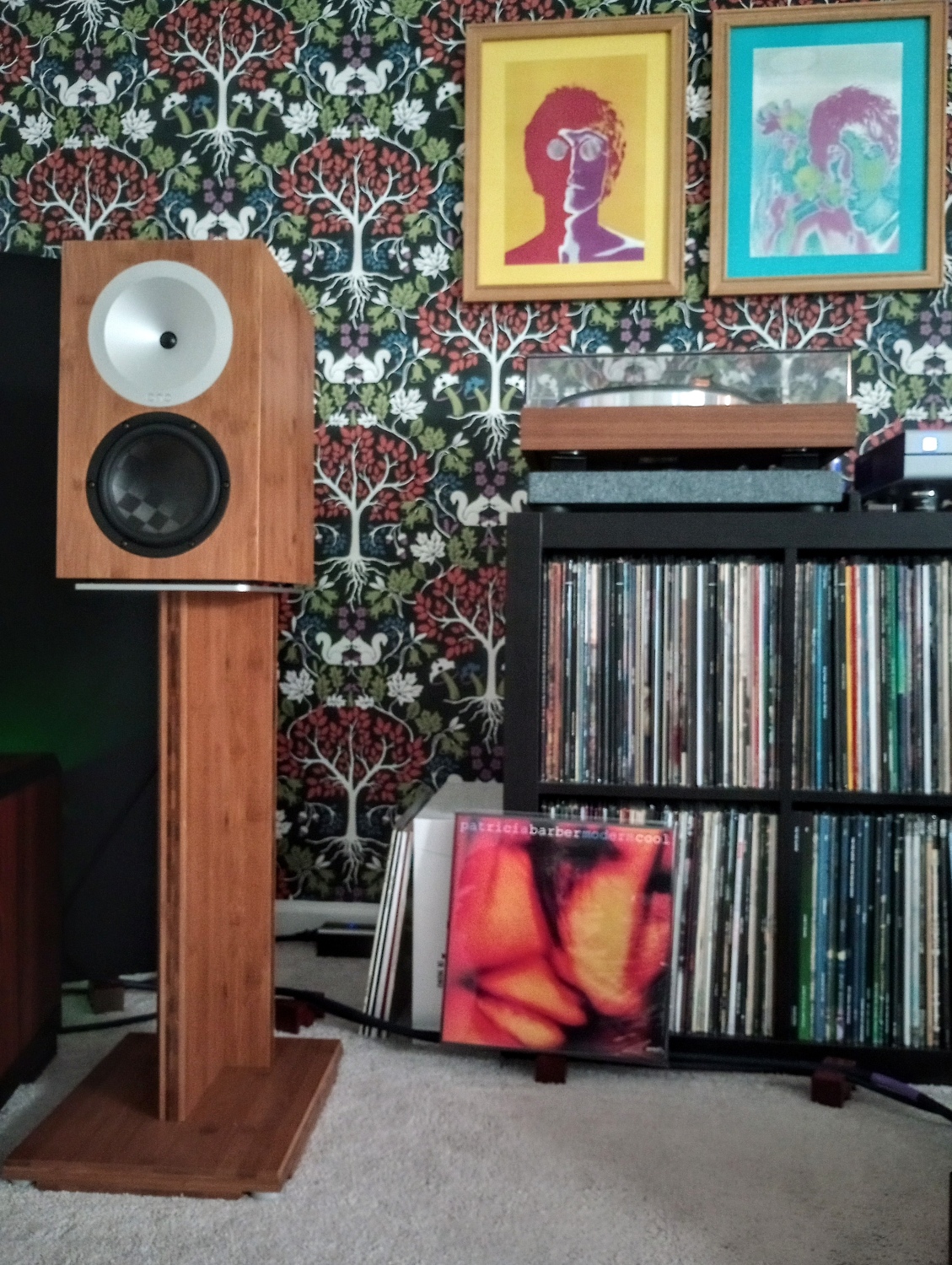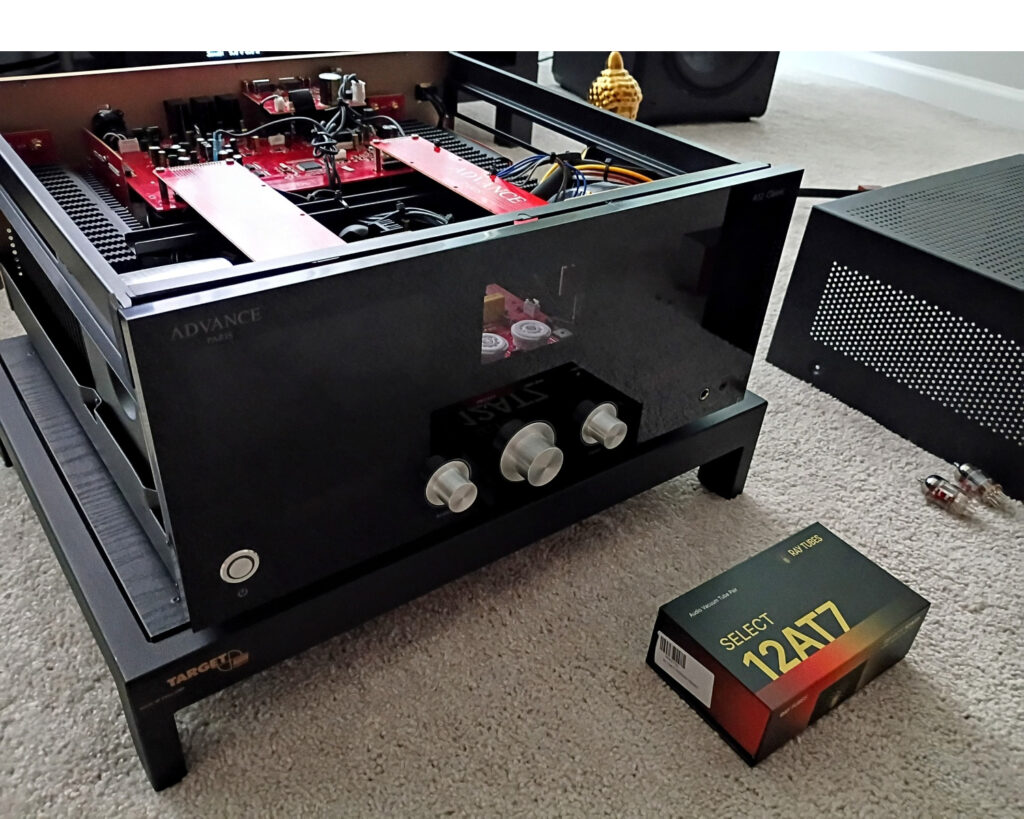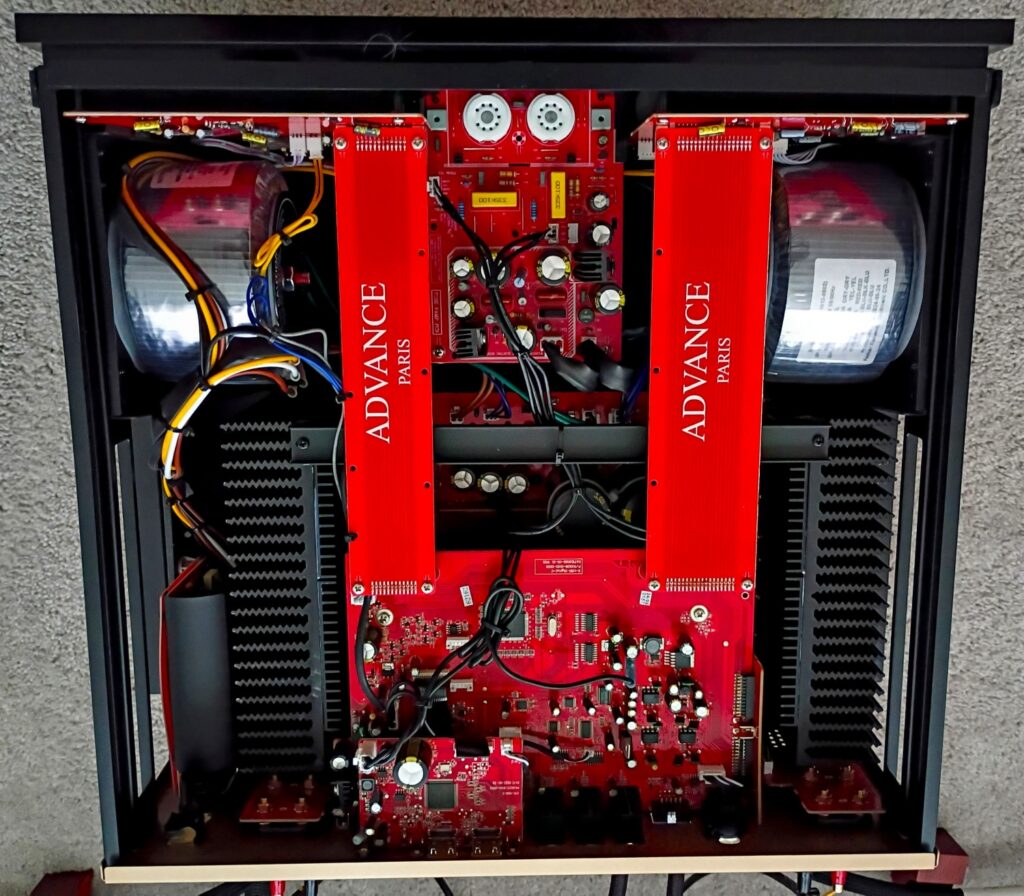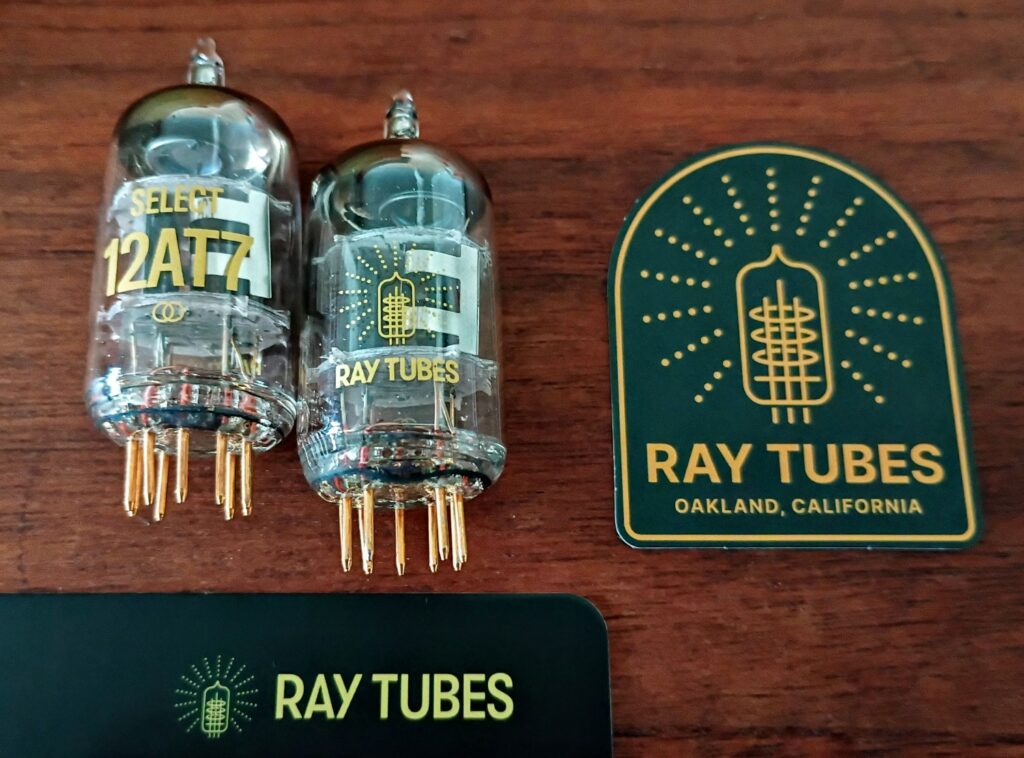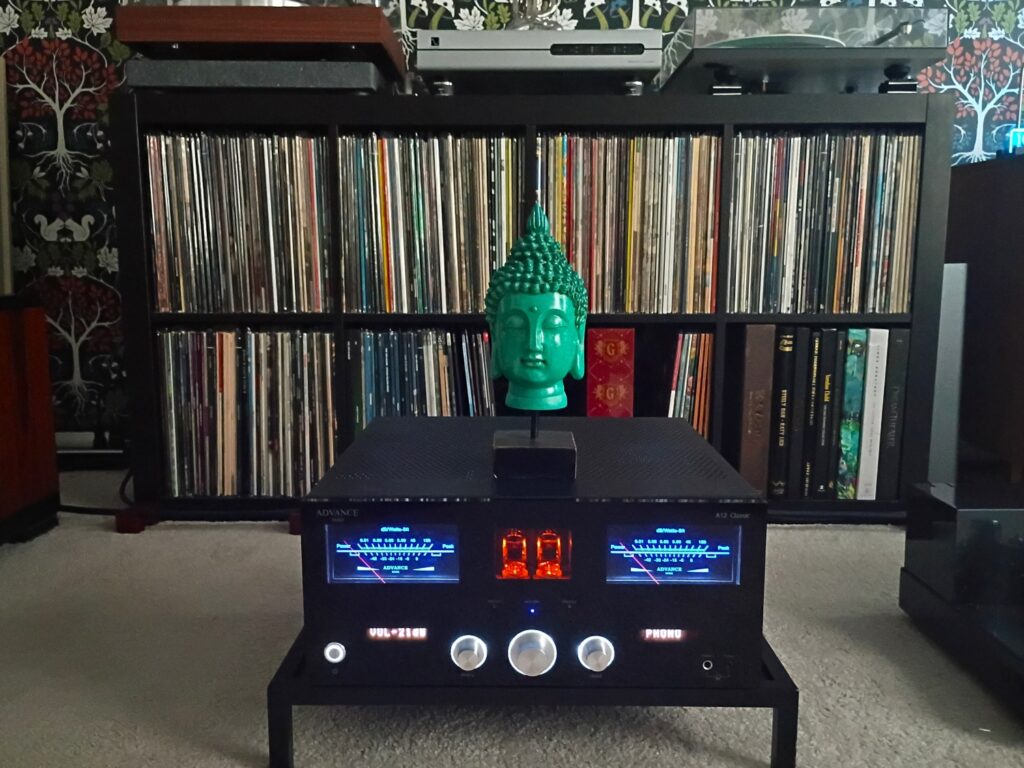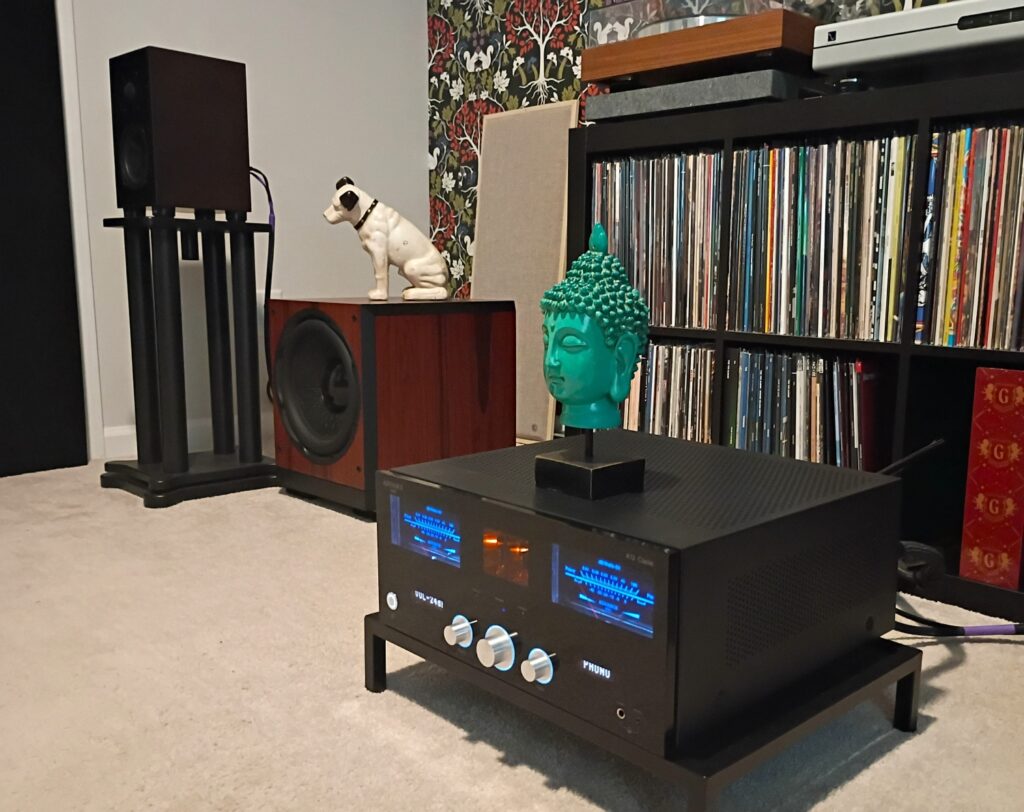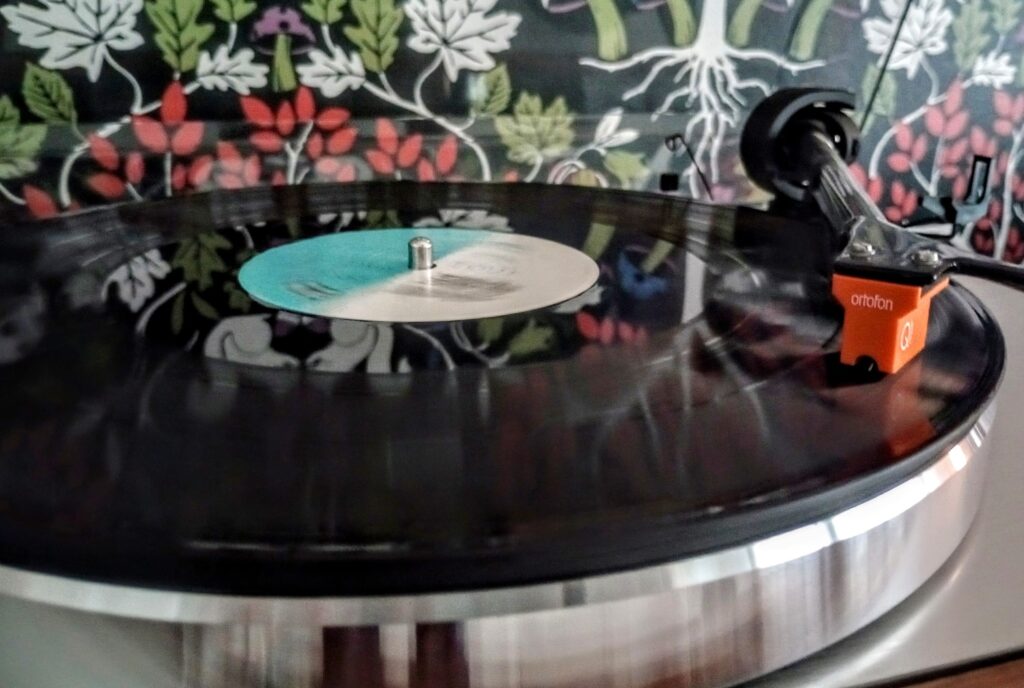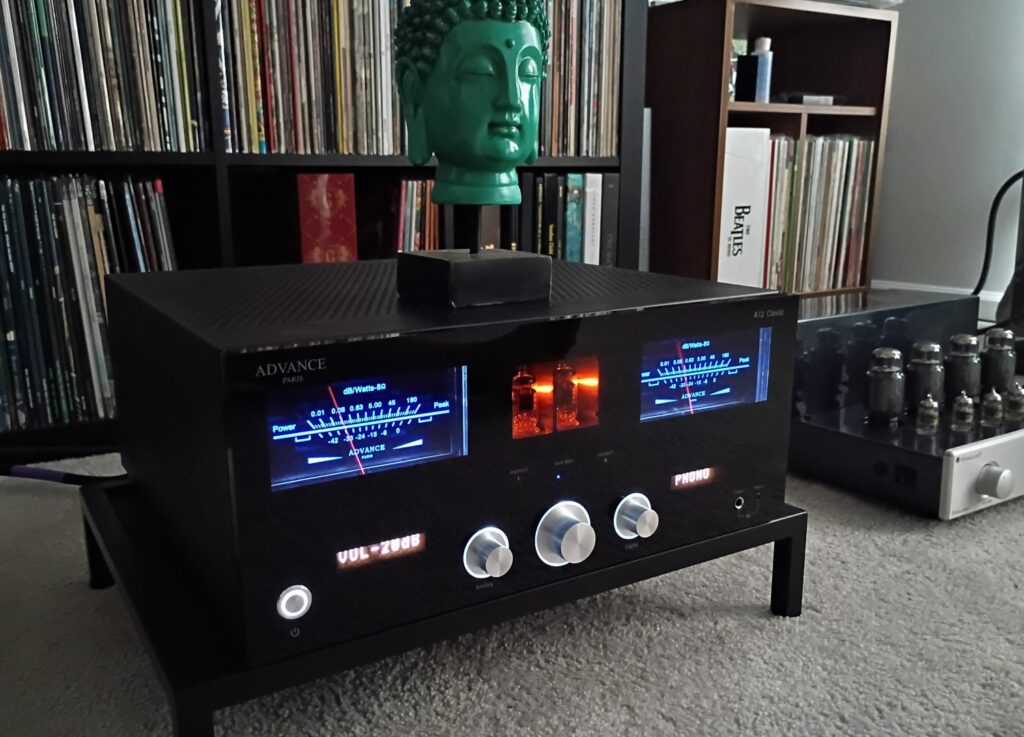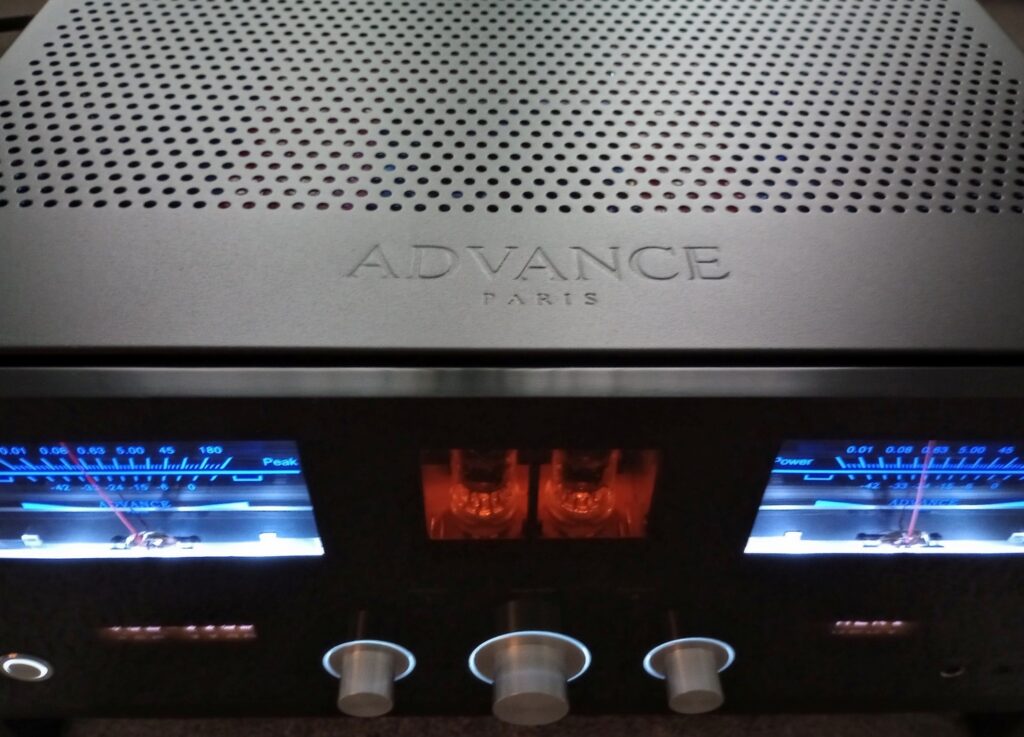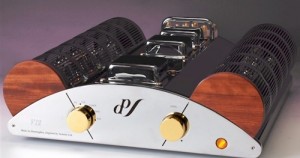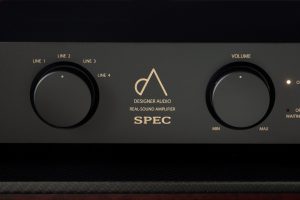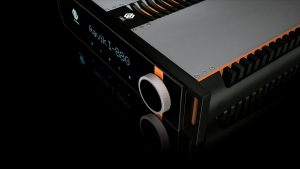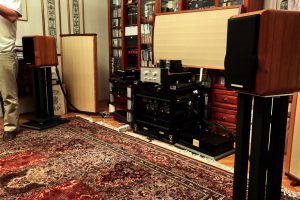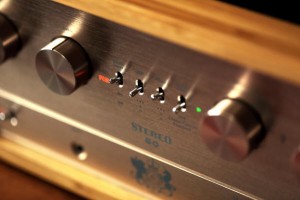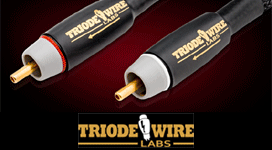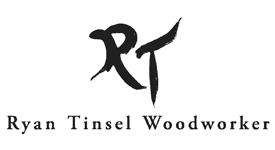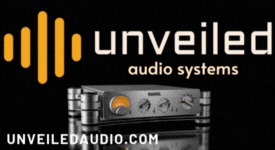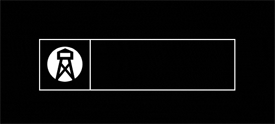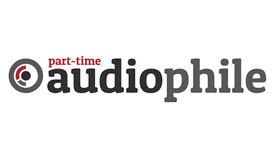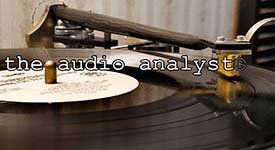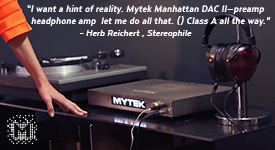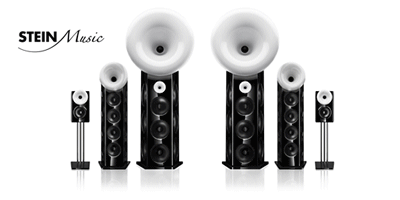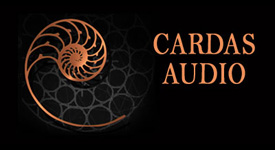I spend a fair amount of time on social media, especially Instagram; it's a great space to post meaningless snippets of existential nonsense, and is less overtly cluttered by the intense political rants that have bogged down Facebook. Not that I'm apolitical—you don't want to get me started about the current state of affairs here in the US—it's just that I'd rather spend my time in pursuit of things I'm much more focused on. And Instagram seems to have grown into something of the village green for information from high-end audio enthusiasts, manufacturers, musicians, and record labels. It's frequently the place where I first share my experiences with new equipment or LPs I'm evaluating. And I get timely feedback from my Instagram posts and engage with audio contacts more personally, often through direct messages; as the hipsters are wont to say, we "slide into each other's DMs!"
At the onset of the new year, my Instagram feed started featuring a nearly continuous image stream of alluring and somewhat vintage-looking audio gear from a manufacturer unfamiliar to me, Advance Paris. Their amplifiers sported large and boldly blue VU meters, offering a first impression not at all unlike that of McIntosh gear; the featured equipment was definitely modern, but the vibe was unmistakably retro. I was genuinely intrigued, but the lack of brand recognition along with everything else going on in my very hectic corner of the universe shoved my curiosity into the recesses of my brain.
Then in early February, I received an email from publicist Jaclyn Inglis regarding Playback Distribution's brand coverage for the upcoming Florida International Audio Expo (FLAX). Which would feature a diverse range of gear from a variety of manufacturers, including loudspeakers from Amphion, PMC, and Vienna Acoustics, along with electronics from the likes of Esoteric, Java HiFi, and Teac. And also a new line of equipment from Advance Paris, a company that's been in business for over thirty years, but is only now being introduced to the American market. Jaclyn noted that private showings at FLAX would be available for the Advance Paris line, and their designer, Cedric Leon, would be onsite and accessible to the press. And he'd also be present at an after-hours meet-and-greet on Friday.
While re-reading through the text of Jaclyn's email, I had the strangest sense of deja vu regarding the Advance Paris equipment—that's when the light bulb clicked on and I made the mental connection to the recent stream of teasers bombarding my Instagram feed. Each time I stopped to have a look, I found the striking visual impression of the A12 Classic integrated amplifier fairly irresistible, but also expected it to be prohibitively expensive. A quick Google search showed the price point to be a relatively affordable $4499, which was definitely unexpected for such a feature-rich and exotic looking high-end amplifier. I immediately responded to Jaclyn with my epiphany on Advance Paris, and to confirm my interest in checking out the A12 at FLAX. To my great surprise, she offered to send an evaluation unit to me within the week, which would allow me to get a feel for its capabilities well in advance of the show.
The VU Effect
I've been involved in audio for ages now, but only approached true audiophile status in the last couple of decades. Prior to that, I was more closely aligned to what's commonly known as a hardware geek, where the appearance of my audio equipment was of paramount importance. And its ability to produce what I then regarded as "high fidelity" sound relegated to an almost secondary consideration. My narrow definition of high fidelity revolved around gear that could produce playback that featured infinitely deep (if less than perfectly controlled) bass, a sparkling midrange, and high frequencies that were free from analog hiss. In terms of the equipment itself, the amplifier, first and foremost, absolutely required VU meters, and the larger, the better. My brain equated mesmerizing VU meters with superior fidelity, and the visual stimulation they provided was part and parcel to my aural enjoyment of the audio experience.
Another prominent area of my audio misconceptions focused around my loudspeakers, where I also mistakenly equated physical appearance with technical excellence. My first real pair of loudspeakers were from Sansui; what attracted me to them was their real wood veneered cabinets and sculpted walnut grills. While their sound quality definitely fit my narrow definition of high fidelity, they ultimately proved to sound fairly horrific, probably due in no small measure to the distinctly mid-fi performance of my amplifier. That changed when I bought my first pair of Magneplanar loudspeakers, and soon gravitated towards more expensive amplification. The times were changing, the appearance of the equipment I could afford was becoming more spartan, and VU meters were no longer in vogue. Magneplanars changed my frame of reference with regard to my love of audio, and I transitioned to actually listening to music with more tuneful bass, a more liquid midrange, and clear, sparkling, and effervescent highs. For the first time, I was actually hearing what was recorded on the LPs or CDs that were part of my regular rotation.
The Advance Paris A12 Classic arrives in the Low Country
Jaclyn had told me that the Advance Paris A12 Classic review unit on the way was one that had previously been in the field but was in perfect working order. So when the package arrived I was surprised to find it contained a brand new unit whose appearance easily surpassed the already good impression I'd gotten from social media and elsewhere online. I immediately hooked the amp into my digital source system, which is one of two audio setups running in my home near Charleston, South Carolina; by clicking on my name in the header above, you can see the full contents of each system. The A12 would be powering a pair of new production KLH Model Five loudspeakers running in tandem with a pair of VeraFi Audio Caldera subwoofers. The digital source signal was supplied by an Aurender A1000 streamer/server configured to play into an S.M.S.L. VMV D2R DAC. A Yamaha BDA1060 universal player also was available for playback of Bluray, SACD, DVD-Audio, and CD discs. Signal and loudspeaker cables were from Audio Art Cable, digital cables were from Oyaide, and AC power cables and conditioning were from AudioQuest.
Visually, the A12 is stunning, with those gorgeous VU meters flanking a pair of small-signal tubes that glow warmly from behind a glass plate. I'm no stranger to tubes, but the presence of those meters in combination with the tubes' luminescent glow definitely made me feel as though I‘d rolled the clock back several decades! Three front panel knobs allow user control of digital (right knob) and analog inputs (left knob), while the larger center knob is a multi-controller. It's used for both volume and menu setup, and all knobs are illuminated by LED rings that surround them. A full-sized, full-function remote is also included. A rear panel switch controls AC power, while the front panel button controls the amp's standby mode. The A12 automatically switches itself into standby after idling for a user-programmable period, which extends tube life and prevents the amp from generating excessive heat in the High Bias mode (more on that later). Upon powering on the A12, the front panel displays a 30 second countdown, allowing the input tubes to reach stasis, which is typical of most modern tube circuit designs. My usual practice with new equipment is to allow a sufficient period for burn- or break-in, but following a quick listen, I was quite surprised by how musically involving the A12 was cold and out of the box. That great first impression told me that anything I experienced with the amplifier prior to meeting with Advance Paris' Cedric Leon in Tampa would be invaluable to any discussions we might have there.
The Advance Paris A12 integrated employs a hybrid Class A/B, dual mono amplifier design, and incorporates separate toroidal transformers for each channel. Its "hybrid" status focuses on the pair of ECC81/12AT7 dual-triode tubes implemented in its preamplifier input circuit, which provide a more euphoric timbre to the unit's overall sound. Having had PrimaLuna tube amplification in my all-analog system for over five years, I feel like I have a fairly good grasp of the differences between the sound of tube versus solid-state amplifier circuits. The A12's tube preamp section would definitely offer a touch of the upper-register sweetness tubes are often noted for. Great tube and solid state designs are often compared similarly in terms of their sonic signatures, and in my experience with tube circuits, the pair of small signal preamp input tubes can often make the biggest overall difference in a tube (or hybrid) amplifier's sound. For me, the inclusion of tubes in the A12 will likely have a positive impact on its sound quality, and a bit of judicious tube-rolling with more esoteric brands could even further enhance its musicality.
Another impressive feature of the A12's amplifier design is the user's ability to change the amplifier's bias from Class A/B to pure Class A via a rear panel "High Bias" switch. With the switch engaged, the circuit biases its first watt into pure Class A; only listening done at extremely loud levels would push the amp beyond that threshold, switching it back into Class A/B as needed. During my frequent equipment and album evaluations, I often listen at what I refer to as reference levels—that translates into "really loudly," with a particular emphasis on the realism of the projected sound. If the A12's VU meters are fairly accurate, the amp only rarely exceeded 1-watt of output even with the most challenging music selections, and at any volume level. I found over time that I preferred the sound of the A12 with the high bias switch engaged; the tradeoff is that pure Class A reproduction is less efficient and generates more heat, with increased energy consumption. As with everything in high-end audio, YMMV, but I have years of experience with similar designs, and with rare exception, I always preferred the more sonically pure Class A playback.
You'd be hard pressed to find an integrated amplifier that offers better functionality and connectability than the A12. Its built-in DAC features a Burr-Brown (Texas Instruments) PCM 1796 chipset that supports playback via USB of PCM sources up to 24/32 bit/192 kHz and native DSD up to DSD128. Multiple digital inputs are available for coaxial and optical sources, though the maximum bit and sample rates are highest with the USB audio digital input. An AES/EBU input allows for direct connection of an external disc player to the A12's internal DAC, and optional BlueTooth modules are available for playback of CD and HD resolution files from a variety of BT equipped sources. A pair of HDMI inputs are also included, one for HDMI audio and another for HDMI ARC should you want to connect the A12 in a video setup. The possibilities seem endless!
A multitude of analog inputs offer full-function preamplification options, with inputs and pre-outs for both XLR and single-ended sources; the unit's internal menu actually allows you to separate the preamp and amplifier functions should you desire. With the recent resurgence of vinyl, Advance Paris chose to include a full-function phono input section that accommodates both moving coil and moving magnet cartridges, and offers rear-panel switching for gain and capacitance. A pair of headphone inputs on the front panel accommodate both standard and 3.5 mm phone plugs, with selectable gain and impedance settings for each on the rear panel. Dual crossover-adjustable subwoofer outputs are available, as well as two sets of five-way binding posts that will allow for connection of two pairs of loudspeakers (minimum 6 ohm load in this configuration). The number of available digital and analog connection options offered by the A12 boggles the mind! While Advance Paris' research and development and equipment design is headquartered in France, all electronics are manufactured in Taiwan.
Specifications
- Output Power: 190 wpc (8 ohms), 280 wpc (4 ohms), Class A/B
- Frequency Response: (-3 dB) 10 Hz - 50 kHz
- Distortion: 0.007% THD
- Signal to Noise Ratio: 103 dB
- Channel Separation: 75 dB
- Size: 16.9" x 7.7" x 17.9"
- Weight: 39.5 lbs/43.9 lbs (shipping)
Listening to the A12 Classic with digital sources through KLH Model Five loudspeakers
My initial listening sessions with the Advance Paris A12 Classic began in my digital source system through my KLH Model Fives. They're exceptional loudspeakers in every respect, and prior to their arrival, I'd owned seven pairs of Magneplanars. I would probably have never considered having another pair of conventional loudspeakers, but the incredible power handling and nearly holographic imaging of the Model Fives displaced the Maggies about a year ago—and they may never return. Model Fives virtually disappear in the soundfield, and they're also really efficient, making them a fairly easy load for most any amplifier to drive, whether tubes or solid state. I've driven these loudspeakers with just about every type of amplification and they never respond with anything less than supremely musical sound.
In my usual system setup, I'm completely spoiled by refined and resolving digital playback. With PCM rates as high as 32-bit/384 kHz (DXD) and DSD512; my Euphony Audio server/streamer actually converts everything to DSD for playback. The Aurender A1000 server/streamer/DAC has built-in AKM chips that will handle maximum rate DXD and DSD files, but I more commonly use it to simply stream my library to my S.M.S.L. VMV D2R DAC. That DAC was highly recommended to me by friends at Euphony Audio in Croatia; they use one in their reference system, and swear the S.M.S.L.'s ROHM DAC chip compares closely in sound to their professional reference, the $30K Master Fidelity NADAC "D" DAC. I must profess that the sound I hear from both the Euphony and Aurender devices streaming through the S.M.S.L. VMV D2R is among the most musically accurate I've ever heard, through any system. The A12's internal DAC maxes out at bit- and sample rates of 32-bit/192 kHz for PCM and DSD128, but I was nonetheless quite excited to hear a more current Burr-Brown implementation.
I've been reviewing a lot of equipment using my library's DXD and DSD 512 files; there's a definite difference in playback clarity and an elevated level of detail when compared to CD- and SACD-quality files. I wanted to try out as many of the A12's available options as possible, but at the outset, I started my evaluation with the A1000/S.M.S.L setup connected to the A12 via the S.M.S.L.'s balanced outputs. I felt this was a really good benchmark to move forward from, and after about 24 hours of run-in on the A12, I did my first really critical listening through the KLH Model Fives. As I previously mentioned, the A12 was set to output pure Class A through the high bias setting. The dual subs in the system were connected to the A12's subwoofer outputs, and the signal isn't rolled off to the main speakers—they run full range.
The very first thing I noticed in this configuration was how very dynamic the Caldera subs suddenly became compared to how they typically sound in my system. In high-end audio, system synergy is paramount, and while the Caldera subs are superb performers that will plumb the depths with seemingly limitless subterranean bass, achieving that with differing setups in my room has proven to be somewhat elusive. Whatever Cedric Leon did in his design for the A12's subwoofer output circuit, its voltage drive powers the Calderas like no other amp or preamp in my recent experience! And the sound was seamless between the subs and mains, requiring only a minimal tweak of the level knobs to get everything into perfect sync. To get the subs integrated, I used a handful of tracks—all CD-quality rips—from jazz pianist Cyrus Chestnut's album Revelation to get the acoustic bass level properly integrated and to confirm the sub's polarity. Next up, I use several tracks, particularly Peter Gabriel's "Down To Earth" from the Wall-E movie soundtrack and a pair of tracks from Yello's One Second, "La Habanera" and "Oh Yeah."
Peter Gabriel's "Down To Earth" is a genuinely enchanting tune, but also contains one of the most impressive displays of subterranean bass I've recently encountered, and has become one of my torture tracks for system evaluations. It will challenge any system's ability to replay a full-range signal over both subs and main loudspeakers without distorting (or causing structural damage to your home!). Finding the correct balance can be tricky, and having an amplifier that exerts an impressive level of control over the bass content is a definite plus. KLH Model Fives are fairly efficient, but did the A12 have the requisite oomph to push through this torture track? No worries—the A12 played "Down To Earth" with the kind of effortlessness that I generally only expect from my Naiu Labs Ella amplifier, which at 3x the price point and 4x the wattage of the A12 can manage it quite easily. The A12 was an absolute champ, even on the dynamic and bass-heavy pair of Yello tracks, especially "La Habanera," where at the outset, a truck fires up its engine, then roars across the soundstage and shakes the entire room in the process. It managed to convey this entertaining track with the requisite level of brashness, helping the Model Fives do much of the heavy lifting. Color me impressed!
Enter ONO Tone Labs a3 standmount loudspeakers
As my listening sessions progressed over a period of weeks, my admittedly high expectation bias for the A12 Classic began to diminish somewhat. And I started noticing a certain upper mid and treble characteristic that was ever so slightly less than perfectly resolving, with a bit of upper-mid/treble tizz here and there. The KLH Model Fives do have a metal dome tweeter, but their excellent crossover design has never imparted anything resembling a metallic sheen to the music, or any treble aberrations of any sort, for that matter. Whereas I'd been mostly playing music that was more dynamic in nature, I started listening to the A12 Classic with additional selections from the range of music I typically use for evaluations. That includes acoustic jazz, classical (orchestral and chamber music), and folk, to get a good representation of how particular equipment produces very naturally recorded music; and vocals, including choral, opera, male, and female voices, which I feel are essential to ensure that the equipment in question can reproduce that all-important spectrum of the frequency range.
I continued to hear that very slight tonal character with much of the music I played—especially music where voices were prominent in the mix. So I rolled out the KLH Model Fives, replacing them with a new pair of loudspeakers from ONO Tone Labs, their a3 standmounts that had just arrived for review (coming soon on Positive Feedback). The a3 is a unique design from a very new company based in Hawaii and spearheaded by Dustin Vawter—some of you will remember him no doubt from his superb work at Audio Alchemy and for the affordable but overperforming gear he built at Channel Islands Audio. The a3 is his first loudspeaker design, and incorporates some really cool tech, along with an impressively beautiful solid bamboo cabinet and stand combination. It prominently features a 19mm silk dome high frequency driver that's mounted in a sculpted, solid aluminum billet wave guide—it's essentially a horn for all practical purposes. The a3's will retail for around the $6000 price point, and exude the kind of appearance—but more importantly, performance—one would expect from much more expensive loudspeaker designs. I'd been listening to them extensively in the tube-based all-analog system, and was totally entranced by its magical high frequencies; now was the perfect time to bring the a3's into the setup with the A12 Classic.
ONO Tone Labs a3's have an exceptionally refined midrange and treble presentation, due in no small part to its custom-built, high-tolerance crossover network—and of course, that exotic high frequency driver. They'd been wowing me in the room next door with their seductively lush presentation and pinpoint imaging; Dustin Vawter insists the a3's are equally at home with either tube or solid-state amplification, so I expected nothing less with the hybrid A12 Classic. After putting them through their paces with my usual torture test tracks (they passed with flying colors!), I played the kind of music that would hopefully demonstrate their ability to portray music with more refined, less headbanging content.
That included tracks from jazz vocalists Harry Connick Jr., Karrin Allyson, Stacey Kent, Holly Cole, Sophie Millman, and Ute Lemper, as well as pop selections from Rickie Lee Jones, Linda Ronstadt, and Jennifer Warnes. I also threw in selections from opera singers Olga Peretyatko and Venera Gimadeiva; when those divas hit sustained notes across multiple octaves, it'll challenge any loudspeaker or amplifier's ability to maintain its composure. The a3's did not disappoint, and the A12 was up to the challenge. And the a3's actually proved to be a better match to my larger digital-source room, with an overall sonic presentation that was greatly improved from that in the more intimate all-analog environment. And with imaging that placed the performers proverbially "in the room"—the a3's responded very well to the A12 Classic's hybrid amplification, despite being somewhat less efficient than the KLH Model Fives. More volume was required to reach similar levels of playback, but the A12 never flinched or gave the slightest hint it might run out of gas at any point during the evaluation.
That said, the slightly troubling upper range character I'd noticed with the Model Fives was also clearly present with the a3's. My experiences from tinkering with tube amplification got the wheels churning and turning inside my brain, and I quickly decided to try rolling the pair of 12AT7 preamp tubes inside the A12. With something that perhaps might impart a slightly different flavor to its overall musical presentation.
Rolling A12 Classic stock tubes with an upgraded set of RAY Select 12AT7s
As I mentioned earlier, my love of tubes (and tinkering with them) got the best of my curiosity, and I decided that a new set of more highly pedigreed input tubes might be in order—but a trip to my equipment closet showed no 12AT7 preamp tubes available. I reached out to Nelson Wu at RAY Tubes, who quickly sent a new matched set of their Select 12AT7's to assist in my evaluation. The A12 Classic stock Psvane tubes are well-constructed and reliable, but in this instance, I felt that replacing them with tubes approaching the ne plus ultra would be useful in helping to determine the full mettle of the A12. The new tubes arrived in about ten days, and it took less than ten minutes to remove and replace the stock tubes, which are housed inside a protective PCB cage that provides additional backlighting for them through the amp's glass panel. Pro Tip: the cage simply plugs into the preamplifier input board, but is also attached by a pair of small screws—use a magnetic screwdriver to remove and replace the screws, which negates the risk of dropping them inside the chassis of the A12.
RAY Tubes arrive with 24 hours or so of burn-in direct from the factory, but I burned them in for an additional 24 hours before doing any serious listening. For full disclosure, the stock Psvane tubes were sourced from their entry-level series, and typically retail for around $36 per pair. The matched pair of RAY Select 12AT7's sell for well over five times that price point, so the comparison isn't really apples-to-apples. But at $210, they represent a very small percentage of the overall cost of the A12, and add a significant uptick in every aspect of its sound quality; $210 is literally peanuts in the world of high-end audio.
I found my tube rolling experience in this evaluation very rewarding, and revisiting all the musical selections from my initial listening now found those tracks imbued with not only greater midrange and treble clarity, but improved musicality, deeper and more controlled bass, and a more solid stereo image. There was better retrieval of fine detail, and more air and space around the performers, who were represented with a greater degree of realism in the soundstage. In addition to the unexpected improvements in the portrayal of music I'm so infinitely familiar with, playback was also absent of any upper-mid/treble artifacts. In some of the music selections, I started hearing things I'd never noticed before, and I have many months of experience with this digital front end, and often decades with the digital music files—that truly shocked me! The RAY Select tubes, when rolled into the A12 Classic, elevated every one of my system performance metrics to a higher level.
Here's the bottom line in my tube rolling adventure with the A12, and there are potentially several things at play in this scenario: 1) My apologies, but I'm a crazy, perfectionist, tinkering tube guy at heart. 2) The stock Psvane tubes were sourced from their entry level series, and are definitely lower in the pecking order than the RAY tubes. Advance Paris' manufacturing facility in Taiwan likely uses whatever tubes they happen to have on hand, whether from JJ, or Psvane, or from wherever, and the tubes used in this particular amp might have been substandard. 3) The stock tubes very well might need another 100 or more hours on them to reach full stasis—their overall character might even out if given more time. 4) The current tube world is a crazy place, and there's not a lot of transparency; brand new, exotic tubes occasionally fail right-out-of-the-gate, and standard grade tubes often perform dismally. I have extensive experience with RAY Tubes from their inception, and while they're not cheap, they often outperform much more expensive and exotic tubes, including hyper-expensive NOS varieties. It is what it is, but in this particular instance, the RAY Tubes made a significant difference in the performance of the A12, totally resolving the minor issues I had with its stock tube sound quality, and lifting its audiophile credibility substantially.
While my initial listening was done with a digital front end that easily exceeds the cost of the A12 Classic, I also switched to a USB audio connection from the Aurender A1000, streaming directly to the A12's internal Burr-Brown DAC. Despite its limited capabilities in terms of its ability to play ultimate resolution digital sources, I found its performance to be surprisingly on par with the more sophisticated equipment. And let's be brutally honest here—how many garden-variety audiophiles out there actually listen to much of anything beyond PCM 24/96 resolution? Heck, the vast majority of files on my digital music server are rips of my CD library, much of it music I've grown to love over the years, and I play for enjoyment with greater frequency than any of the higher resolution content on the server. I really liked that the A12's large digital display, which accurately showed the bit and sample rates of everything I played through its internal DAC. And I'd be willing to bet that in a blind listening test, hardly anyone would be able to accurately distinguish between the A12's internal DAC and my more highly pedigreed external DAC/streaming setup.
The A12 Classic with all-analog sources and XSA Labs Vanguard monitors
I moved the A12 Classic into my all-analog room that features a near-field listening arrangement with my XSA Labs Vanguard compact standmount monitors. XSA Vanguards are an updated flavor of the classic British LS3/5A standard, with a slightly larger cabinet that yields a tad more bass extension. They're driven in tandem with a pair of Caldera subwoofers, powered by my PrimaLuna EVO 300 tube integrated—which also features a full complement of RAY tubes. The Vanguards are the most inefficient loudspeakers I own, but they have a fairly flat impedance curve and respond well to both tube and solid-state amplification. The A12—especially with the RAY tubes in place—should be a perfect match for them. Analog sources feature a pair of turntables, a ProJect Classic EVO mounted with an Ortofon Quintet Bronze MC cart, along with a vintage Rega Planar 2 mounted with an Ortofon 2M Mono cart. They both typically play through my PS Audio Stellar phono preamp, but for this part of the evaluation, I focused on the A12's built-in phono section, and to keep it simple, I spun only stereo LPs on the ProJect table. All interconnect and loudspeaker cables in the system are also from Audio Art Cable, along with AC power cables and conditioning from AudioQuest.
The phono section controls for the A12 are on its rear panel, but accessing them was no problem. There's a sliding switch for cartridge gain, with positions for moving magnet and both low and high gain settings for moving coil cartridges. There's also a switch to adjust MC cartridge loading, with capacitance selections from 100 to 300 pF. While fairly spartan compared to the infinitely variable gain and load selections offered by my PS Audio Stellar phono preamp, the limited functionality of the A12's phono section offered surprisingly good sound with no appreciable noise. With the current resurgence in vinyl's popularity, having the option of connecting a turntable—especially one equipped with a moving coil cartridge—is a definite plus. That said, upon listening to the first LP, I had to take a moment to recalibrate the dual subwoofer output levels, which had gotten a bit of a boost from the insertion of the A12 into the system. As I noted earlier with regard to my tube rolling experiment, the digital system also displayed an increase in bass output with the RAY tubes, and that definitely spilled over to the analog setup as well.
The A12 matched well with the Vanguard monitors, and while the combo excelled in reproducing more intimate music selections, it could also shake the house down! My Impex Records' 45 rpm One-Step LP set of Patricia Barber's Nightclub was portrayed with requisite levels of both acoustic intimacy and jazzy brashness, with playback that was totally on par with what I'm used to hearing from my PrimaLuna EVO 300 tube amp. Unsurprisingly, the RAY tubes in the A12's input section provided a similar sonic signature to those found in the EVO 300. And despite the lowish efficiency rating of the Vanguards, the higher overall power output of the A12 allowed them to reach SPLs that approached what I heard from the loudspeakers in the digital system, and without any strain on either amp or speakers. The A12 was also set to high bias here, and the overall output regardless of volume level rarely exceeded one watt.
I played selections from a recent acquisition, the Music On Vinyl repress of Jeff Beck's superb Guitar Shop LP, which really pushes the envelope in terms of dynamics. Even though conventional logic would have a pair of LS3/5A clones like the Vanguards happier with a diet of folk, acoustic jazz, or perhaps chamber music, they'll surprisingly rock out. Especially with an amp like the A12 that offers superb control of their smallish woofer cones. Once I'd established the correct level for the subs—and everything runs full-range in this system as well—the sound coming from the Vanguards was always nothing less than perfectly controlled and exceptionally well-mannered, with precise delivery of this album's often extreme dynamics. While the PS Audio Stellar phono pre has become my new reference over the last couple of years, the A12's built-in phono section is no slouch, and offered superb LP playback. And provided very impressive high-end analog performance for what might typically be considered a throw-in feature on many integrated amplifiers.
Final Impressions
There were features I didn't explore on the Advance Paris A12 Classic, including much of its extensive flexibility with analog and digital inputs/outputs of every conceivable make—my systems just aren't that complex. And as the optional BlueTooth modules weren't supplied, no evaluation was possible for its functionality. I'm not an extreme headphone listener, so I didn't evaluate the A12's capabilities, although higher-end users will find the flexibility to adjust its impedance and gain a definite plus. My Yamaha universal disc player has a built-in Burr-Brown DAC that matches that of the A12 almost exactly, so my playback tests with it simply used the amp's XLR connections, and the sound quality of CDs and SACDs alike was superlative. The A12 Classic offers a level of performance and flexibility that will not only satisfy but likely exceed the needs of most users.
I found the A12 Classic to be a formidable and capable dynamic performer as an amplifier, and its rated power into 4 and 8 ohms easily satisfied my range of medium-to-high-efficiency loudspeakers with zero issues. That said, the ONO Tone Labs a3 loudspeakers had the highest impedance curve of any of those I tested, and they're actually more comfortable with solid-state amplifiers that output lotsa watts, like my $12k Naiu Labs Ella, which is capable of one kilowatt into each channel. Regardless, the a3 would play crazy loud powered by the A12, but required a volume setting close to the amp's maximum output; even at extreme volume levels, the A12 never clipped the signal and the a3 showed no signs of distress. The A12 always output sound that was not only musical, but perfectly controlled, and at any volume level. Those Russian operatic divas can easily trigger the protection circuits on many less robust amplifiers, but the A12 sailed through those challenging selections effortlessly!
My enthusiasm with tube rolling may have gotten the best of me in this review, but I stand by my results: the A12 Classic is a much better amp with upgraded tubes like the RAY Select 12AT7's. Their addition lifted an already great amp to a much higher level of high-end audio goodness! I had a couple of minor quibbles with the A12; the extremely bright LED rings that surround the input and multi-controller knobs aren't dimmable or defeatable—at least I was unable to make it happen. Multiple trips through the menu settings could never change their appearance for me, if indeed it's even an option. Also, the VU meters I was so excited about—and trust me, they're incredibly retro cool—are so very dark, such that it's virtually impossible to see the needle action from the seating position. That definitely lessened their impact for me, but I've seen some teasers for Advance Paris' new series—the NOVA line—that appears to feature VU meters with improved visibility.
The Advance Paris A12 Classic is a superb performer in every respect, and offers a compelling level of features and flexibility to satisfy most any audiophile. The ability to upgrade the tube section will have great appeal, and the amp's ease in driving a variety of speaker loads was impressive. It was a pleasure to meet designer Cedric Leon at FLAX in Tampa, and I thoroughly enjoyed our discussions on his design philosophies. I've truly enjoyed my time with this amp, and give it my highest rating. And I look forward to seeing more from Advance Paris' new NOVA line that just debuted at High End Munich. The A12 Classic comes very highly recommended!
A12 Classic Integrated Amplifier
Retail: $4499
Advance Paris
RAY Tubes
All photos courtesy of Advance Paris and the author


